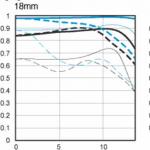Rides for dummies: fast trains, from ticket purchase to exit. How a train works How long-distance trains work
ELECTRIC TRAINS. FEATURES OF THEIR WORK AND DESIGN
GENERAL INFORMATION
It is difficult to overestimate the importance of "electric trains", as they are called by passengers using the services of suburban electric trains. Every year, millions of people travel by electric trains. Only the railway junction of the capital transports more than half a billion passengers per year in commuter traffic.
The beginning of the introduction of electric traction on the railways was laid, as already noted, by the electrification of the suburban section of Baku - Sabunchi - Surakhani, intended for the transportation of oil field workers. For this section, the cars were built by the Mytishchi Carriage Works, and the traction engines were built by the Dynamo plant named after. S. M. Kirov.
For the next suburban electrified section Moscow - Mytishchi (1929), the multiple unit sections were also created by the Mytishchi plant, and the traction engines for them were created by the Dynamo plant. The section consisted of motor car in conjunction with two trailed(on both sides of the motor); it was controlled from cabins located at the ends of both trailer cars. Motor cars received the designation St.
In 1932-1941. The Mytishchi plant and the Dynamo plant produced three-car sections of Sd. Since 1947, the Riga Carriage Works (RVZ) began to produce three-car sections Ср.
Electrical equipment for them was also supplied by the Dynamo plant named after. S. M. Kirov. Since at that time electrified DC roads operated with contact voltages of 1500 and 3000 V, the sections could operate at two voltages. Since 1949, all equipment for sections was manufactured by the Riga Carriage Building and the Riga Electrotechnical (REZ) plants.
Due to the fact that new sections of railways were electrified only at a voltage of 3000 V and sections of 1500 V began to be transferred to the same voltage, the need to build sections Cp disappeared. Since 1952, RVZ and REZ began to produce three-car sections Cp3 for 3000 V. Electric trains consisting of nine or six cars were formed from them. However, these sections had low acceleration (one of the most important parameters in commuter traffic with frequent stops) and low design speed (85 km/h).
These shortcomings could be eliminated by increasing the number of motor cars in the train. In 1957, the Riga factories, together with the Dynamo plant named after. S. M. Kirov produced the first ten-car electric trains of the ER1 series with five motor cars, stopping the construction of the SR3 sections. The maximum speed of the ER1 electric train has increased to 130 km/h, the starting acceleration has increased to 0.6 m/s2. The composition of electrical equipment included machines and apparatus of a more advanced design.
Since 1962, the Riga and Kalinin Carriage Works began producing ER2 electric trains. Unlike ER1, they had elongated external sliding doors to allow passengers to board and disembark at stops with low and high platforms.
In 1964-1968. A batch of ER22 electric trains equipped with regenerative-rheostatic braking was produced. The design speed of such a train remained at the level of 130 km/h, since it is not advisable to increase it for suburban traffic, but the starting acceleration increased to 0.7 m/s2. However, the operation of these electric trains has also revealed a number of disadvantages associated with the temperature instability of the characteristics of the braking control system in operation and the limited range of application of regenerative braking, especially when the voltage in the contact network increases. These shortcomings caused increased wear of the traction motor manifolds and a significant number of all-round lights. In this regard, the construction of ER22 electric trains was stopped.
Since 1984, the ER200 electric train has been in constant operation for intercity passenger traffic, capable of speeds up to 200 km/h. It consists of 12 motor cars with 48 traction engines and two trailer head cars.
In connection with the beginning of the electrification of railways using the alternating current system, in July 1959, the RVZ produced the first two-car section, consisting of a motor and trailer cars. After extensive testing by the RVZ, REZ plants, together with the Kalinin Carriage Building and other plants, the first ten-car AC electric train ER7 with mercury rectifiers was produced. Then, on these trains, mercury rectifiers, as well as on electric locomotives, were replaced by silicon ones (ER7K).
The operating experience of the ER7K electric trains was taken into account during the construction of the ER9 electric trains, the serial production of which began in 1962. The electric trains, in which the rectifier units began to be located under the cars, were given the designation ER9P. The production of new modifications of AC electric trains - ER9M and ER9E, with modernized equipment, improved mechanical part and increased comfort conditions for passengers, has been mastered.
Electric trains are formed from sections. Each section includes a motor (M), trailer (P) or head (D) cars (Fig. 121).
Rice. 121 Scheme of formation of electric trains ER2 and ER9
The train is formed according to the scheme: (G-(-M)-(- (P-(-+ M)+ (P + M)+ (P+M)+ (M+G). Excluding sections P--M, you can reduce the number of cars to four or, by adding a section, increase it to 12 (in particular, the increased flow of suburban passengers on certain routes of the Moscow junction determined the need to use twelve-car trains).In any version, the electric train contains two head cars, and the number of motor cars is equal to half the total number of cars.In what follows, when describing, we will assume that the electric train consists of ten cars.
The design speed of electric trains ER2 and ER9 is 130 km/h, there are 20 traction motors in a ten-car train. The starting acceleration of serial electric trains is 0.6 m/s2, therefore, the train can reach speeds of up to 100 km/h in the time t= v:a= 46 s (with uniformly accelerated movement).
DEVICE OF ELECTRIC TRAINS
On electric trains, DC traction motors powered by a 3000 V contact network and pulsating current motors powered through converters from a 25,000 V contact network are installed. Traction motors are sequentially excited. The power of traction motors of electric trains is much lower than that of electric locomotives, and in hourly mode is 200 kW. Four traction motors are installed on each motor car and, therefore, a ten-car electric train is driven by traction motors with a total power of 4000 kW.
The relatively low power of traction motors and the specifics of the operating mode of electric trains make it possible to apply self-ventilation system; the fan is mounted on the motor shaft. With self-ventilation, a vacuum is created inside the engine, which contributes to the penetration of dust and snow into the engine. Therefore, on electric trains, the air intake is carried out in the upper part of the car body. Air passes through cleaning filters and settling chambers, and then through flexible pipes that are connected to traction motors. During the acceleration of the electric train for some time, the traction motors operate with a current greater than the nominal (continuous mode) value. The speed of movement and air consumption are low, which causes rapid heating of the motor windings. Then, in almost all cases, the electric train moves in the run-down mode at a sufficiently high speed and braking. The temperature of the traction motor by the next start after parking has time to decrease significantly.
The start of the traction motors of DC electric trains is carried out with the starting rheostat switched on at the serial connection of the traction motors of the motor car, followed by the transition to a series-parallel connection (two motors in each circuit). Recall that for electric locomotives such a connection is conditionally considered parallel. With this method of starting, the loss of electricity in the starting rheostats of a motor car is reduced to 33% of the total energy spent on starting, instead of 50% if the start was carried out without regrouping the traction motors. This is very important in suburban traffic with relatively frequent stops and starts of electric trains.
The transition from one connection of motors to another is carried out according to the bridge scheme. As with electric locomotives, excitation weakening is used to increase the number of speed characteristics in electric trains. Usually two steps are used. The direction of movement is changed by switching the excitation windings.
On ER9 AC electric trains of all indices, a rectifier unit assembled from silicon diodes is connected to the secondary winding of the transformer in a bridge circuit; it feeds the traction motors with pulsating current. Traction motors are permanently connected in two parallel groups: two in series in each group. To regulate the input voltage and, consequently, the speed of movement, the secondary winding of the transformer has eight sections with the same voltages in each section; the voltage of each section of the secondary winding of the transformer at idle is 276 V. Therefore, the maximum voltage of the secondary winding is 276-8 = 2208 V. In addition to traction motors, the power circuit of electric trains includes basically the same devices as on electric locomotives - current collectors , reversers, protection devices, etc. The operation of the power circuit devices is controlled using the driver's controllers. But, unlike electric locomotives, the necessary switching during start-up, acceleration and movement is carried out automatically.. The use of automatic control became possible because, unlike a train with an electric locomotive in the head, where the mass of the train can vary widely, the mass of an electric train is determined mainly by the tare of the cars, i.e., it is practically constant. Automatic switching takes place under the control of the acceleration relay, which operates depending on the value of the traction current.
The main group apparatus that performs all the switching in the power circuit of the ER2 motor car is rheostat controller, in ER9 electric trains - main controller.
The main handle of the driver's controller, which controls the operation of the traction motors, has only four positions instead of more than three dozen on electric locomotives. When it is set to position I, the rheostat controller under the control of the acceleration relay, turning and making the appropriate switching, removes the starting rheostat stages from the control circuit when the traction motors are connected in series. In position II of the main handle of the driver's controller, the first, and then automatically the second stage of excitation weakening is switched on. Position III of the main handle of the controller corresponds to the parallel connection of the motors. All necessary switching is also carried out under the control of the acceleration relay. If the main handle of the driver's controller is set to position IV, further acceleration of the electric train is carried out, since two positions of excitation weakening are automatically switched on in turn. In addition, the main handle of the driver's controller has a maneuvering position in which, with the starting rheostat turned on and the motors connected in series, the electric train moves at low speed.
The main handle of the ER9 electric train driver controller has the same number of positions. Depending on its position, under the control of the acceleration relay, the shaft of the main controller rotates. As a result, the number of sections of the secondary winding of the transformer connected to the rectifier installation, as well as the stages of excitation attenuation, change.
The protection of the power circuits of electric trains is similar to the protection of such circuits on electric locomotives: from a high-speed or main switch to protection against radio interference. To protect axle bearings of wheel sets from electrocorrosion, two grounding devices are installed for each bogie of a motor car.
To ensure the operation of electric trains, auxiliary machines are installed: motor-compressors, motor-generators, motor-fans, electric pumps for the circulation of cooling oil in the traction transformer of motor cars ER9, a phase splitter, etc.
Unlike electric locomotives, the motor-compressor motors of DC electric trains operate at a nominal voltage of 1.5 kV. To obtain a voltage of 1.5 kV, a special DC machine is installed, called voltage divider.
All bogies of motor and trailer cars are two-axle with double spring suspension. The first stage of the spring suspension is located in the axle box and is called the over-axle suspension, and the second, located in the center of the bogie, is called the central suspension. In spring suspension applied only coil springs. Leaf springs are not used because they have significant internal friction between the sheets. When an electric train moves, high-frequency vibrations occur that are not damped by leaf springs. These vibrations are transmitted to the car in the form of noise, shaking, vibration. Cylindrical springs, having no internal friction, provide the car with a smooth and silent ride. Other additional vibration dampers are also provided in the trolley device.
Wheel sets of motor and trailer cars of electric trains have a different design. The wheel pair of a motor car, like on an electric locomotive, consists of wheel centers on which tires are mounted. They also have a gearbox bearing assembly. The wheelset of a trailer car consists only of an axle and two solid-rolled wheels.
On electric trains ER2 and ER9P (M, E), frame suspension of traction motors is used. The traction drive is one-way, it consists of a large spur gear and gear, which are enclosed in a cast housing that provides a constant central, and an elastic coupling. The elastic coupling transmits torque from the engine to the gear and compensates for the misalignment of the engine and gear shafts resulting from the mutual movement of the fully sprung engine and unsprung wheelset when the car is moving.
Automatic locomotive signaling (ALSN) and train hitchhiking, updated in the head cars of electric trains, increase traffic safety, contribute to an increase in the throughput of railways. ALSN devices allow the passage of the yellow light of a traffic light at a speed of not more than 60 km / h. When a red light is on at a locomotive traffic light, the speed must not exceed 20 km/h. If the specified speeds are exceeded, the hitchhiking will work and the electric train will be forced to stop, which the driver can no longer prevent. The main device for hitchhiking is electropneumatic valve, connecting the electrical part with the pneumatic brake system of the electric train.
The equipment of electric trains is mainly located under the bodies of the cars. Starting rheostats, excitation attenuation resistors, inductive shunts, a high-speed switch, etc. are installed under the body of a motor car on a DC electric train. A current collector, a device for protection against radio interference, arresters, support insulators with a connecting bus for parallel operation of electric train current collectors are installed on the roof. In the front part of the car there are two cabinets: one for high-voltage devices (acceleration relay, counter, ammeter, etc.), the other for low-voltage equipment.
An accumulator battery, a motor-compressor, a control generator and other equipment are installed under the body in the head and trailer cars. The head car has a driver's cab with the devices necessary to control the electric train.
In ER9P(M, E) electric trains, the main equipment is also located under the cars, including a traction transformer, smoothing reactors, etc. The main switch is installed on the roof of the motor car.
Why is the train called that way? This article provides informative information about the difference between an electric train and a train, why it transports people only over fairly short distances. In addition, summarized technical information about this mode of transport is given below.
An electric train is an electric train that is involved in commuter traffic. That is, it transports people over short distances (no more than 200-250 kilometers). It is worth talking about it in more depth.
Composition and their difference
Surely everyone who has been at railway stations and platforms at least a few times in their life noticed that different rolling stock standing on the tracks (long-distance trains, freight cars, electric trains, locomotives) still differs from each other.
A long-distance train consists of a huge or diesel locomotive) and wagons attached to it. The latter cannot move on their own, as they do not have wheeled motors to move them. Therefore, the task of moving cars (both passenger and freight) is carried out by the locomotive.
It is worth noting that there are also non-electrified plots. The rolling stock, to which the article is devoted, can only move where there is electricity and, accordingly, a contact wire. Hence the name of the rolling stock - electric train, electric train. On the Moscow railway - direct current, in other regions almost everywhere - alternating current.
The electric train consists of two head cars, which are installed strictly at the ends of the train, as well as motor and trailer cars. Has anyone wondered why such vehicles always have two "heads" with control cabins, while freight and passenger trains do not? The fact is that the electric train is an independent rolling stock, it is unprofitable for the carrier at the terminal station (at the station) to reattach the car with the control cabin or the locomotive so that it can go in the opposite direction. Rail transport, unlike others, cannot make a turn (exception: and a turntable at a factory or depot).

Curious readers may have a question: what about trains? They are pulled by a locomotive to their final destination or station, where they are changed.
Brief description of the train device
An electric train is such a rolling stock, in which a pantograph (pantograph) is located on the roofs of motor cars. It is worth noting that electric locomotives also have it. With the help of a current collector, the rolling stock receives electricity. Why is she needed? First, all devices and systems in the train start working; secondly, due to the actions of the driver, they are set in motion. But in order for them to start rotating, it is necessary to supply electric power to the traction motors located on the wheel pairs of motor cars.
It can only move around its site with the kind of current that suits it. For example, the electric train ER-2 can only work where there is direct current, and ER-9 - where there is alternating current.
Where ply, who uses
Not only residents of megacities make daily trips from the city to the region, but also people living in the suburbs. That is why officially this type of railway transport is called a suburban electric train. Such an inscription can be found on station signs and signs, in the schedule.

Route examples are as follows:
- Moscow - Sergiev Posad;
- St. Petersburg - Siverskaya;
- Voronezh-1 - Liski;
- Smolensk - Yelnya.
As you can see, suburban communication exists not only in Moscow and St. Petersburg. Everyone can make a trip, because commuter trains are cheaper than long-distance trains. Only there are no guarantees that it will turn out to go all the way sitting. The fact is that train tickets are sold with the number of the car and the seat. The train is a rolling stock, the interior of which has seating and standing places. The ticket indicates the station of departure and arrival, as well as the date of its receipt.
What are the types of electric
Electric train - a train that has several categories:
- regular (stops at all or almost all stations);
- ambulance (stops only at major stations);
- express (has a maximum of one adjacent stop).
Of course, the usual train is cheaper than the rest.

Express, on the other hand, is an electric train with increased comfort, an individual seat for a passenger and a place for luggage.
In conclusion, it is worth noting that the electric train has always been the most popular mode of transport for traveling short distances.
Despite the growing popularity of air travel, rail transport is still popular - both in our country and in the world. Long-distance train routes ply the continents and states. And let's take a closer look at this category of railway trains? First, let's define a key term.
What is a train?
In order to accurately imagine that this is a long-distance train, you need to know the definition of the root word-concept.
A train today is a coupled and formed self-propelled railway train, consisting of several cars, as well as a locomotive (or a motor car), which sets it in motion. He must have sound and visual signals that determine where the tail is and where the head is. Also, almost all trains have an individual number that allows them to be identified.
This transport also includes:
- motor cars;
- locomotives following without a train;
- self-propelled railcars;
- railcars.
Trains entered our life in 1825. Today they are able to move along the railway track, monorail, using a magnetic cushion. Rail capable of accelerating up to 575 km / h, trackless (maglev) - up to 581 km / h. There is also a special discipline that studies these vehicles - train traction.
Long distance train is...
There are several classifications of these vehicles. We also need one that separates them according to the range of distances covered. The following stands out here:
- Long-distance trains are passenger trains, whose route length is more than 700 km.
- Direct - follow only one document.
- Local - passenger trains, whose route is shorter than 700 km, following only one road. This section has now been deprecated.
- Suburban - trains whose route is less than 150 km (sometimes - 200 km).
- Through - follows through several technical stations without formation-disbandment.
- Prefabricated - a train that delivers wagons to intermediate stations.
- Precinct - a composition whose path lies from one technical station to another.

Types of railway trains
When buying tickets for long-distance trains, it will not be superfluous to know about some of their features. We list the most important and interesting.
Long-distance routes are divided into:
- High-speed. Follow with a speed of at least 91 km / h. At the same time, their average speed is 140-200 km / h.
- Ambulance. The average speed along the entire route is 50-90 km/h.
- Passenger. Movement speed - no more than 50 km/h.

We also note that fast trains have a minimum number of stops on their way, and they also cost much less time. Many of them are branded. That is, they have their own name, unique style, provide more comfortable travel conditions, convenient schedule. If a long-distance train is a multi-unit train, then it can be either without the provision of additional services (economy), or with increased comfort.
According to the regularity of movement, passenger trains can be divided into one-time, seasonal and year-round. By frequency - the following daily, every other day, on certain days of the week or specific days of the month.
What does the numbering say?
When buying tickets for long-distance trains, take a look at the numbering. What she can tell, we put in the table.
Now let's move on to the features of the cars.
Types of passenger cars
Long-distance trains may include the following types of wagons:
- Suite. They have from 4 to 6 compartments in their composition, a bar. Each compartment has 1-2 seats. The lower one transforms into a single bed, maybe the upper shelf. Also, each compartment has a table, an armchair, its own bathroom (washbasin and toilet), shower, air conditioning, heated floors, TV, radio, media player.
- SW. These are 8-9 double compartments. There are two bathrooms in the car. Each compartment has two lower or upper and lower places, a table, hangers, a place for placing luggage.
- coupe. Standardly in the car there are 9 four-seater compartments and 2 bathrooms. In each compartment there are two upper and lower places, a table, a mirror, hangers, lockers for hand luggage.
- reserved seat. Nine open compartments (4 seats each) and side shelves (18 seats) - a total of 54 seats. There are tables, hooks for clothes, lockers and shelves for luggage.
- General wagons. They have only seats - 54-81, depending on the comfort class.

Keep the following in mind when choosing a location:
- The bottom shelves are odd, the top shelves are even.
- Near the toilet:
- Always the ninth compartment - seats 33-36 (in the NE - 17-18).
- In the reserved seat - 33-38.
- In a general type car - 49-57.
Long-distance trains are always passenger trains. Among themselves, they also differ in speed of movement, frequency, regularity of flights. When choosing a ticket, it is important to consider both the type of carriage and the location of the seat.
Now the trains have a much greater length, and speed, and weight compared to the first trains that ran 160 years ago. But they still have the same steel wheels with a ledge on the edge of the rim and roll on iron rails of the same shape in the form of the Latin letter I. Each train wheel has a ledge measuring 1 inch on the inside of the rim.
It is these protrusions that guide the wheels along the rails, whether it is a straight section or a rounding of the path. Railroad wheel and rail fit together so well, that is, they have such a small coefficient of friction, that if a 40-ton car is allowed to roll freely on a horizontal track at 60 miles per hour, it will travel another 5 miles before stopping. While a truck weighing 40 tons with the engine off and the same initial speed will be able to drive to a stop about 1 mile.
Elastic support for rail

The rail rests on wooden or concrete sleepers laid in a gravel base. As a rule, long bolts passing through the spring clips hold the rail in place. This elastic mounting system contributes to a softer ride.
rail joint

When the rails are butted together, there is a small gap between each 39-foot section. It is he who allows the metal rails to expand without interference when heated. A bolted rail cap holds adjacent rail sections together. Although at present, on the main railway lines, all segments on each side of the track are welded into one rail.
Traction force

The train with all its weight (through the wheels) presses on the rails. The rolling wheel due to friction engages with the rail and from this, at the place of their contact, a traction force arises, which moves the train forward both on flat areas and on slopes. The weight plus the friction between the rail and the rolling wheel act to pull the train forward.
c - coefficient of friction
F - friction force
bypasses

In order for a moving train to change from one track to another, its wheels must make such a transition. And in this they are helped by railroad switches. The guide rails allow the wheels to cross the "cross" where the two tracks meet. If the train hits the arrow, moving along the picture from the bottom up, then after the arrow it will continue to move along the straight track drawn on the right.
Movement on the bends of the paths

When a train moves along a bend in the track, the so-called centrifugal force acts on it, which tends to push the train out of its track. To counteract this lateral force, the outer rail is mounted higher than the inner rail. Such an excess of one rail over another is called the slope of the turn. It allows trains to overcome rounded sections of the track without slowing down.
Sag

The distance between the rails on the bends of the track is made larger than on straight sections. This reduces the friction force that acts on the wheels when the centrifugal force pulls the car sideways, and at the same time reduces wear on the rails.
Trolleys on wheels

The wheels of the wagons are attached to bogies, that is, movable platforms, on which the suspension system is also located. Two pairs of wheels are attached to each trolley. And the bogies themselves, on which the car is placed, can turn under it to the right - to the left with the help of a special device - a thrust bearing. This is what makes the movement of the car smooth when the train passes rounded sections of the track. An independent suspension system helps ensure a smooth ride.
The preparation of the train begins directly from the inspection and immediately after its arrival from the previous flight. Inspectors on the external and internal equipment determine which cars can go on the road and which need to be uncoupled. The composition is disbanded and staffed again. A service team is allocated for its maintenance. Some trains have about a day or a little more time before the next flight, while others should be ready in five hours.
Preparatory work at the depot
Technical inspection (TO-2) is carried out by teams of the electrical workshop, repair of running gear and internal equipment, and the restaurant car repair workshop.
The outfitting team works according to a predetermined schedule. Everything needed for restoration is in stock. Heads of trains and conductors constantly exchange documentation with the storekeeper-inventory clerk. Information about the remaining unused sets of bed linen, tablecloths and other train utensils is entered into the database. Thus, new needs of the car and the train as a whole are formed.

Before departure, the train is filled with water. The conductor carefully checks, in addition to its presence and the serviceability of the crane, also the fuel level, the contents of the first-aid kit, the serviceability of handrails, locks, entrance and transition platforms, the presence of seals on stop valves and emergency exit drive handles, the presence and serviceability of fire and other internal equipment.
Checking the operation of the brake system and chassis is carried out, which, together with an assistant, controls the work of technical specialists. All detected deficiencies are eliminated at their first request.
A commission is assigned to each composition, which ultimately checks the readiness for shipment. It includes: representatives of the depot, the sanitary and epidemiological service, the apparatus of auditors for traffic safety.
Before the start of the movement, all employees involved in its provision must be instructed.
Departure of the train on a flight
The dispatcher, having taken the readings of the control devices on the central office, having made sure that the turnout sections are free (when changing the route - the stage), sets the departure route, and then carries out the actual transfer of the turnouts and the opening of the exit traffic light.
At an enabling signal, the driver with an assistant performs the “Minute of readiness” regulation. It takes the form of a dialogue, during which the assistant reports on:
- Availability of travel documents and warning form;
- Switching on safety devices and radio stations;
- release hand brake;
- Availability of certificates on brakes and tail car;
- Indications of a locomotive traffic light;
- Pressure in the brake and pressure lines;
- Indications of the exit (route) traffic light;
- The set speed of following the route;
- About the end of the parking time and the absence of stop signals on the way.
In fact, job descriptions for preparing for a flight include a huge number of different operations, and those that are named are just a small fraction of the huge work that Russian Railways employees do to ensure that passengers reach their destination on time and without problems.





